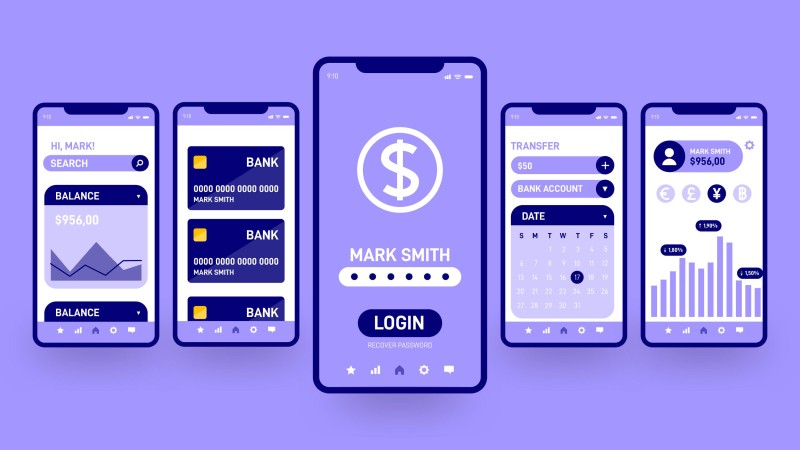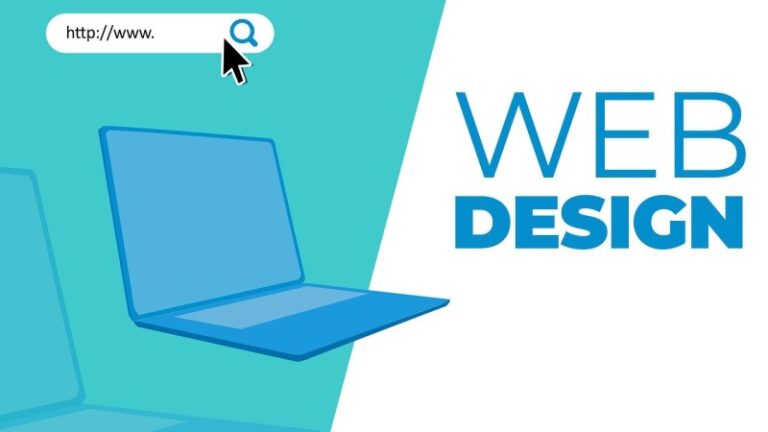Fintech has revolutionised the banking industry through mobile banking, digital wallets, investments, and P2P transactions. It has become possible to make a deposit, withdraw or avoid a bank branch or even a financial advisor session with just a few touches on the smartphone. This transition has made financial services more accessible, convenient, and efficient worldwide.
Where transaction efficiency, trust and security are the key values, platform architecture drives a company’s success in a field. In financial firms, strategic, efficient, reliable and easy-to-manage tools/means in web development are mandatory to sustain the competition.
Why User Experience (UX) Matters in Fintech
As more players continue to enter the fintech market, product differentiation is no longer a luxury but a necessity, especially in user experience. Fintech platform: Where people choose to trust, remain loyal and be satisfied with their choices. On the other hand, a correctly laid out environment may result in user satisfaction, mistakes and costs.
For years, traditional financial services needed to value UX more, leaving consumers with complex and confusing experiences. According to the research carried out by Emplifi, in the UK &US, only one or two negative customer experiences would lead to 86% of consumers switching away from their favourite brands. This shows that there needs to be much focus placed on ensuring that the user experience is positive, and this argument is especially salient in an industry that relies so heavily on the consumer’s trust.
First of all, it matters because good UX in fintech is a way to attract new users and retain them. It is logical and uncluttered, so one gets the impression that even complex financial procedures are easy to address. Because fintech interacts with and facilitates high-value transactions or personal information, well-defined and even clickable interfaces will serve as a ground for trust and continual use. In addition, companies that look at customer service as a value centre and not as a cost lead to high revenues in the fintech firms.
Related Post :- How UI/UX Design Principles Can Elevate Your Presentation
Understanding What Fintech Users Need
Like almost any market, the growing fintech demographic is as diverse as it is global. Platforms, therefore, need to be inclusive and accessible to all demographics, adopting simple, intuitive interfaces that guide users through complex financial tasks with ease.
Accessibility
In fintech, user-friendly design is crucial for creating a sense of accessibility. People trust fintech platforms to manage their sensitive financial information, and if the process feels overly complicated or confusing, users may abandon the platform. Ensuring inclusivity in fintech also extends to accessibility for users with disabilities. Features like screen reader compatibility, adjustable font sizes, and color contrast help create an environment where no user feels excluded. Fintech platforms should be built to make complex financial tasks feel effortless and intuitive for all users.
Convenience
With the development of technology, demands have shifted to require fast, easy, and safe services that can be obtained anytime. This has led to new digitally focused challenger banks competing with the traditional established banks with equally developed applications and elements like instant notifications and artificial intelligence-based advice.
When most banks provide similar functionalities, what sets fintechs apart is their ability to deliver an outstanding UX. Great UX enhances customer engagement, drives retention, and fosters brand loyalty, giving fintechs a competitive edge.
Key UX Principles for Fintech Platforms
User-Centric Design
Understanding user behavior and preferences is critical. User-centred design ensures that fintech apps meet the specific needs of their target audience by integrating features that users find valuable, such as automated financial management tools or personalized insights.
Mobile-First Design
Since more and more users prefer using their mobile devices to handle their finances, fintech platforms should be mobile-centered. The responsive web design approach enables clients to access the services confidently through the gadgets, with particular attention to the small screens of the mobile gadgets. This makes it easy to move from one link to another, quick loading and generally more user-friendly on mobile, which is important considering the increased uptake of mobile banking.
Seamless Onboarding
A smooth onboarding process is crucial, as many users tend to abandon fintech apps during the initial setup. To reduce friction, fintech platforms should allow users to explore the essential features without immediately requiring extensive personal information or verification. This approach makes the transition into full app use feel more natural, reducing overwhelm and enhancing early engagement.
Intuitive Navigation
Fintech users expect intuitive navigation, particularly when managing complex financial data. When it comes to layouts, making sure that the features often used are easy to find on the website and that the number of actions taken to complete essential activities are also condensed will enhance the user experience considerably. Legible and organized menus and clear workflow patterns do not confuse the users.
Consistency Across Channels
The essence and strength of UX relies on the ability of the user to move from one platform to another with limited disruption, like from a mobile to a desktop and all other related interfaces. The customer, for instance, should be able to transition through the different channels seamlessly, with branding and operation standards being uniform across the boards. This is vital to keep familiarity and trust intact to ensure that no matter which device a user uses, they can use the platform seamlessly.
Multi-Layer Security
Fintech companies are very security-conscious, which is commendable – though done in a way that cannot impune the user experience. In addition to the points mentioned above, components such as 2FA, data encryption, and real-time fraud checks should also be implemented error-free to safeguard users’ sensitive financial data. One needs to establish a balance between implementing highly secure features in a service and, simultaneously, making it seem very friendly to the user.
Personalised Customer Experience
The fourth and final trend raises the idea of personalization as more and more fintech users seek customised services. The various Fintech platforms must offer individualized information and guidance through relevant data and technology tools. Personalization not only helps increase engagement and retention but also provides value-added services that companies cannot traditionally offer.
Data Security
With the increase of cyber threats, fintechs must deliver functionality combined with security, but this should not negatively influence UX. Such measures as multi-factor authentication, biometric verification, and real-time security alerts can help add more security while allowing customers to be more comfortable using the app.
Fast Loading Times
In fintech, speed is essential, as users often rely on real-time data to make financial decisions. Any lag in processing transactions or loading pages can lead to frustration and even lost transactions. Optimizing for fast load times and efficient data handling ensures a smooth experience, keeping users engaged and reducing the risk of abandoned actions.
Tools and Frameworks to Improve Fintech UX
Developers have a wide array of tools and frameworks at their disposal to improve fintech UX and streamline the development process:
AI-Powered Chatbots: Interactive AI chatbots are now necessary for customer care since they are cost-saving and always available to assist clients, yet they do not burden the human resource department.
Biometric Authentication: Among the biometric identifiers, fingerprint and face identification are the most helpful as they improve the apps’ security while simultaneously simplifying the process of their usage by providing users with faster access to the application.
Omnichannel Consistency: Mobile-first, mobile-only approaches will be replaced by customer experience initiatives which integrate customers’ multi-device experiences.
Hyper-Personalization: With the use of AI and data analysis, the fintechs will meet modern demand by personalizing the services they render; the recommendations given by a fintech shall be as relevant to the user as possible.
Voice and Conversational Interfaces: Speech operations in banking will also rise, and customers will be able to do transactions and check balances using natural language.
Augmented and Virtual Reality (AR/VR): AR and VR could be used by fintechs for scenario-based, interactive financial applications, including mainly see-through visualization of investment portfolios or even a virtual consultation.
Regulatory-Compliant UX: The dynamic nature of regulations will help UX theft fintech to create an interface that is friendly to the users as well as compliant with the standards of the established international bodies that govern online financial transactions.
Emotion-Driven UX: Fintechs will integrate solutions that involve app stewardship, and this makes the different applications as follows: The use of apps during transactions and the use of emotions such as stress during application use; Highlighting of amel use, especially when specific saver targets are met.
Real-Time Financial Insights: Real-time data integration will evolve, making this access even better for users who can learn more about their spending capacities and the performances of investment projects within the shortest time possible.
Minimalist Design: The market will shift towards cleaner UX design to keep fintech apps straightforward despite adding more features.
Conclusion
In the fiercely competitive fintech industry, prioritizing user experience is more than just a design consideration—it’s a strategic advantage. A well-designed UX fosters trust increases user engagement and leads to higher customer retention rates. By adopting best practices in web development and leveraging the right tools, fintech platforms can create intuitive, secure, and accessible experiences for users.






